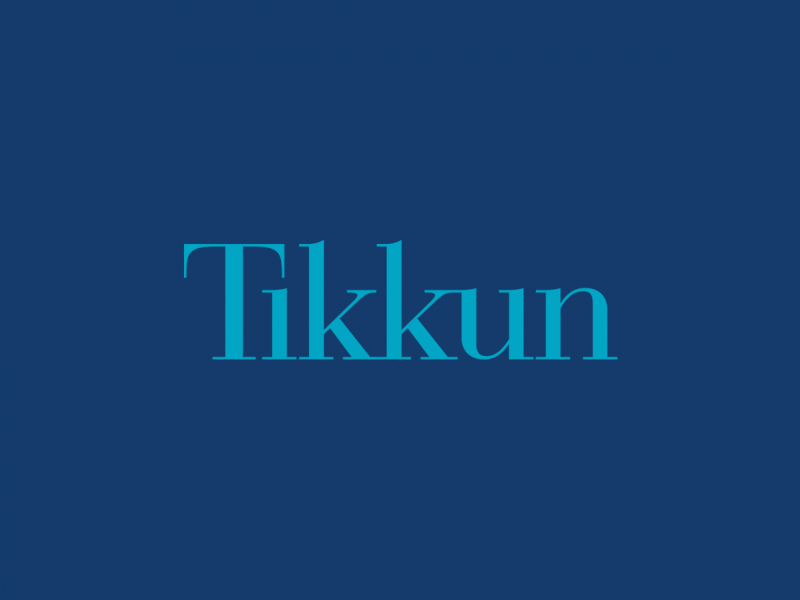The problem with the opening passages of the Torah in a sense is the problem of being. As Rashi points out from the outset with the teaching of R. Yitzchak, the narration of the creation is meant to teach us not basic lessons in science and cosmology, but rather something about our being in the world (the fact that all through my early Jewish Day School years all the Rabbis seemed to be concerned with was attacking “evolution” is, I believe, a phenomenon of the internalization of certain Protestant agendas, but that’s a subject for some other discussion). At any rate, as this question of “being” is so fundamental an aspect of contemporary discourse, it is worth addressing, right at the Beginning, as it were.
Torah Commentary
Making Space in the Sukka: Social Justice and Joy
|
The period of time in the Hebrew calendar reaching from Rosh Hashana to Yom Kippur is thought of generally as one unit, in English commonly referred to as the High Holidays, whereas Sukkot, the festival which follows four days after Yom Kippur, is generally thought of as a festive holiday, one of the three biblical Temple festivals (Pesach, Shavuot, and Sukkot), entirely distinct from the Days of Awe which happen to precede it. The mystics, however, view the period from Rosh Hashana until the end of Sukkot as one long arc . . .
Torah Commentary
Book Of Jonah Dvar: Delivered at Temple Beth Shalom, Las Vegas, Mincha of Yom Kippur 2011
|
Why should a day we traditionally experience as being somber be considered the happiest day of the year? It would appear that there are two reasons.
Articles
Discipline and Democracy, from Guatemala to Wall Street
|
Especially this year, here in Guatemala, Yom Kippur is not so much the Day of Atonement as it is the Day of Discipline. For if there’s one lesson I have taken so far from my short time here in Guatemala, it is that of discipline.
Torah Commentary
Yom Kippur
|
In the shiur regarding Rosh Hashana, we saw how the shofar connected us to a moment unlimited by, or outside of, time. This radicalization of the perception of time bears an even more immediate relationship to the concept of Yom Kippur and its central component, Teshuva, or repentance, as the word teshuva is roughly translated.
Articles
The Birth of Jazz and the Jews of South Rampart Street
|
In popular imagination, jazz emerged from the bordellos of Storyville, the legendary red-light district where piano-players like Jelly Roll Morton entertained the prostitutes and their sporting men. But South Rampart itself was a prior birthplace to jazz along with neighboring Back a’ Town…. Like thrice-born Dionysius, jazz had two mothers, for a while simultaneously: according to the late jazz historian Tad Jones, South Rampart was “the spot for jazz.”
Jewish Wisdom
Code Pink Activist Rae Abileah addresses members of the Network of Spiritual Progressives at Beyt Tikkun High Holiday services Sept. 29, 2011
|
Shana tova! I am so moved to be here in prayer with this vibrant, strong, brilliant community, and to be standing here on the bima in front of you all is something I could never have dreamed of. I feel I am in the company of friends, of family, speaking with you all, as I know that a central tenant of this community is a dedication to tikkun olam, to the practice of repairing and healing the world and ourselves. The common ground we walk on is the commitment to creating a more just and joyous world. And this morning I want to share my story with you – the abbreviated version – I promise! – and besides folks I haven’t lived that long yet… — and I want to share my process of t’shuvah with you. I was born and raised in the rocking era of the 1980s in a land not very far, far away from here – but with an intimate reverence for a land very far away – the country of Israel. Even in the small coastal town of Half Moon Bay where I grew up, there was some occasional anti-Jewish teasing on the playground. So the idea of a Jewish state fortified by an army to protect the Jews from future annihilation felt comforting. And the concept, as it was explained to me, of “a land without a people for a people without a land” seemed to make sense.
Torah Commentary
Behave! Don’t you know that the Book of Life Is Open?
|
The liturgical and ritual richness of the High Holiday season has produced a number of vibrant symbols which seem to maintain their ability to reverberate in consciousness repeatedly through the ages. After all, the theme of the period is the interplay of creation and judgment, reflection and repentance, concepts at the core of human existence; after all, it is traditional to look at Rosh Hashana as the day which determines life or death, as it were, for the coming year.
Torah Commentary
Ha’azinu
|
After the long speech by Moshe, a summation of the exodus and the wanderings through the desert, which constitutes the Mishne Torah, the fifth book of the Torah, Moshe decides to wrap things up with two things, a lengthy poem, which makes up the bulk of Perashat Ha’azinu and a set of blessings to the tribes which brings the book of Devarim to an end.
Torah Commentary
Rosh Hashana
|
Central to, or lurking behind, if you will, any discussion appropriate to Rosh Hashana is the problem of time. For while we all talk of Rosh Hashana as a celebration of the “New Year”, the texts, biblical and talmudic, are rather ambiguous as to what the actual date of creation is. One thing is certain– Rosh Hashana is not meant to be the date of the creation of the world per se.
2011
Sword and Plowshare in Jewish Thought
|
Eisen’s book is written as a series of dialogues between two voices: one that believes Judaism accepts and affirms the use of violence, and one that believes Judaism much more strongly seeks and urges peace. This pattern is useful but could be a lot more useful, were it not for two baffling failings in this review of the multimillennial literature.
2011
High Holiday Workbook
|
Repentance and Atonement Are NOT Just for Jews: A Note to Our Non-Jewish Readers on How This High Holiday Workbook Can Be of Use to You
Tikkun is not just for Jews—it is interfaith as well as Jewish. This High Holiday workbook is an invitation to all people to join with the Jewish people . . .
Torah Commentary
Nitzavim I: A Covenant of All of You
|
With these words, the covenant between Gd and the people of Israel is established, or re-established, as we shall suggest later in the shiur. However, the verse itself is problematic in several ways.
2011
The Legacy of Abraham Joshua Heschel
|
Abraham Joshua Heschel was a singular figure in American Jewish history and, indeed, in Jewish thought. Nearly four decades after his death—his legacy remains towering and majestic in the consciousness of the American Jewish community and beyond. How fortunate, then, that Susannah Heschel has given us a new edited collection, Abraham Joshua Heschel: Essential Writings. Not only does this remarkable collection provide a sense of the breadth of Heschel’s interests and writings, but the ordering of the selections and the insightful introductions highlight the deep coherence of the different dimensions of his work.
Torah Commentary
Perashat Ki Tavo
|
Perashat Ki Tavo, read this week, is noteworthy for containing a lengthy restatement of a blessing and curse sequence. Not the cheeriest or most readable of passages by any means, rather a long recitation of all the nastiness that will overtake the people should they fail to hearken to Gd’s word. I suspect the custom of reading these sections fast and sotto voce was not one that needed to be forcibly impressed upon the community; one wants to be done with these passages.

